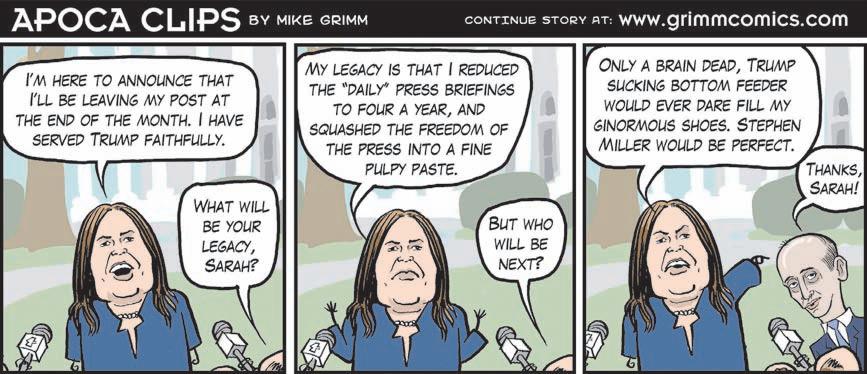
3 minute read
AdvicE goddESS
from June 20, 2019
The heart is a clonely hunter
I’ve heard that we’re romantically attracted to people who look like us. Is that true? I don’t think any of my boyfriends have looked anything like me, but I have seen couples who look so similar they could be related. There is this notion that opposites attract. Actually, the opposite often seems to be the case. According to research on “assortative mating,” people tend to pair up with partners who are physically similar to them—more often than would be expected through random chance.
Advertisement
To explore how much matchiness is appealing to us, socialpersonality psychologists R. Chris Fraley and Michael J. Marks used a computer to blend each research participant’s face into the face of a stranger of the opposite sex. They did this to increasing degrees, morphing in 22 percent, 32 percent, 39 percent and 45 percent of the research participants’ features. Their research participants rated the strangers’ faces most sexually appealing with the 22 percent—that is, with just 22 percent of the participants’ own features mixed in.
In another morphing study, neuropsychologist Bruno Laeng and his colleagues mixed each participant’s face with that of their romantic partner—with 11 percent, 22 percent and 33 percent blending. And again, 22 percent was picked consistently—suggesting that people find their romantic partners more attractive when they look just a bit like them.
Granted, it could be a coincidence that the exact same percentage popped up in both studies. However, what’s noteworthy is that more resemblance didn’t lead to more attraction. This jibes with how some degree of similarity is genetically beneficial, increasing the likelihood of desirable traits showing up in partners’ children.
However, evolution seems to have installed a psychological mechanism to keep us from lusting after extremely similar partners, such as siblings and first cousins. Such close relatives are more likely to have the same rare recessive genes for a disease.
As for you, though you say you haven’t resembled your partners, it’s possible that you actually have in subtle ways you didn’t notice. Back in 1903, researchers Karl Pearson and Alice Lee looked at 1,000 couples in the United Kingdom and found correlation in height, arm span and left forearm length between husband and wife.
This isn’t to say everyone’s going to resemble their romantic partner, but we seem subconsciously drawn to people who share our features to some extent.
Groundhug Day
I’ve been with my wife for 23 years. I know sex is important, but sometimes we’re tired or not in the mood. I want to keep our intimacy alive. What are some things we can do to stay connected physically? It turns out the answer isn’t all that complicated: Basically, you just need to bring in some of the G-rated part of foreplay and afterplay (without the sex in between). Psychologist Debby Herbenick and her colleagues note that researchers have found three things—kissing, cuddling and massage—to be “important aspects of sexual intimacy ... associated with relationship and sexual satisfaction.”
Helpfully, the Herbenick team chiseled apart what they call the “KCM composite”—the way kissing, cuddling and massage get mushed together in studies. They felt that this blending might obscure “important differences” in the effect of each. In fact, they found that cuddling seems to be uniquely powerful, increasing emotional intimacy (as well as sexual pleasure) in a way kissing and massage do not.
It’s important to make sure that cuddling is often an end in itself. This, paradoxically, should help keep your sex life alive: Your wife will see your cuddles as an expression of your love rather than a sign that you just want something out of the sexual vending machine. Ω
Got a problem? Write Amy Alkon, 171 Pier Ave., No. 280, Santa Monica, CA 90405, or email AdviceAmy@aol.com (www.advicegoddess.com).
ERIK HOLLAND










